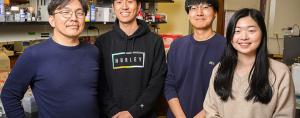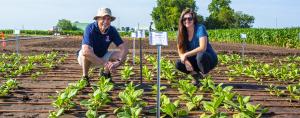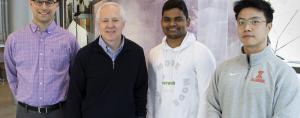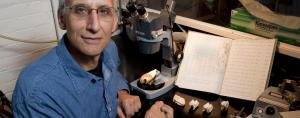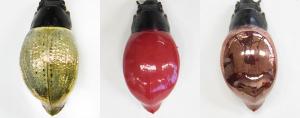News Archive
IGB researchers awe Congress leaders with iBioFAB
Ananya Sen
The Computing Research Association, in collaboration with the Institute of Electrical and Electronics Engineers and Carnegie Mellon University, hosted Members of Congress and th
Researchers enhance efficiency of CRISPR-Cas12a system using base Z
Shelby Lawson
CRISPR, (short for “clustered regularly interspaced short palindromic repeats”), is a groundbreaking gene-editing tool that empowers scientists to finely manipulate DNA, whether
Nerves prompt muscle to release factors that boost brain health
Liz Ahlberg Touchstone
Exercise prompts muscles to release molecular cargo that boosts brain cell function and connection, but the process is not well understood.
Understanding the language of proteins
Stuart Robbins
Architecturally, Large Language Models are the basis for Generative AI popularized by ChatGPT from OpenAI, and similar products from Meta, Google, Microsoft, and C3.AI. By
Engineered increase in mesophyll conductance improves photosynthetic efficiency in field trial
RIPE Communications
It is possible to engineer increased mesophyll conductance in plants according to new research from the University of Illinois Urbana-Champaign.
New photonic crystal approach can enable sensitive and affordable detection of biomarkers
Shelby Lawson
Biomarkers are small molecules of interest to researchers, because they can indicate underlying diseases, often even before symptoms even appear.
Tibetan plateau had broader social dimensions than previously thought
Ananya Sen
The Tibetan plateau—the world’s highest and largest plateau—poses a challenge to the people who live there because of its extreme climate.
IGB employees honored with Chancellor's Staff Excellence Award
Maeve Reilly
Sixteen academic professionals and civil service staff members, including two from the IGB, have received the Chancellor’s Staff Excellence Award recognizing exceptional perform
Beetle morphology influences fog droplet collection, researchers find
Shelby Lawson
In coastal arid regions where water sources are scarce, windborne fog droplets play a crucial role in sustaining life.
Alison Bell awarded Guggenheim Fellowship
Jodi Heckel
Two University of Illinois Urbana-Champaign professors have been awarded 2024 Guggenheim Fellowships.
New interdisciplinary named research center established at IGB
Ananya Sen
The Bill and Julie Kellner Center for Neurogenomics, Behavior and Society will bring together a breadth of fields, including genomic biology, neuroscience, the social sciences,
Model suggests how ancient RNA may have gained self-cutting ability essential for life
Shelby Lawson
Scientists have long pondered the beginnings of life on Earth. One theory is that RNA, which is ubiquitous across all domains of life, played a central role in early life.


